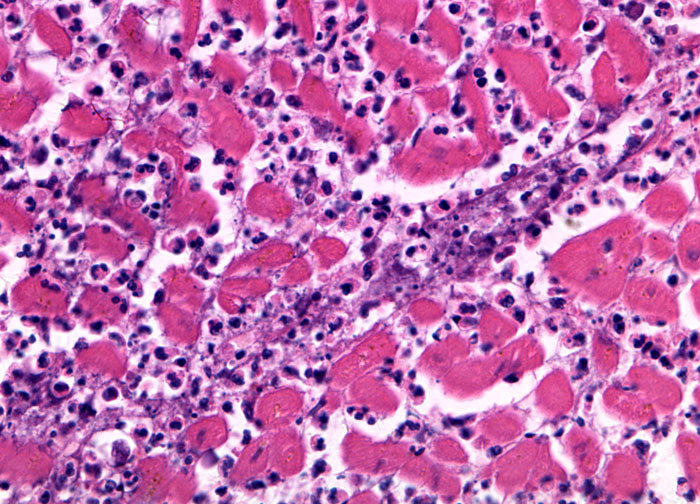
Myocardial Infarction at 40x Magnification
When someone suffers an acute myocardial infarction, the primary objective is reperfusion, the restoration of blood flow to the heart. Reperfusion provides the best result if it is achieved within the first 4 to 6 hours after a myocardial infarction occurs. If blood flow is restored after that amount of time, irreversible necrosis usually has already taken place. Thus timely diagnosis and treatment are extremely important for sufferers of heart attacks. Electrocardiograms, magnetic resonance imaging, and a thrombolysis in myocardial infarction (TIMI) risk score are often used to aid in diagnosis, but must be carried out rapidly. Blood tests that measure the level of cardiac enzymes released into the circulatory system by dying heart muscle are also useful indicators of heart attacks, but take such a long time (up to 24 hours) to complete that they are only useful in the confirmation of a diagnosis, rather than the diagnosis itself.















